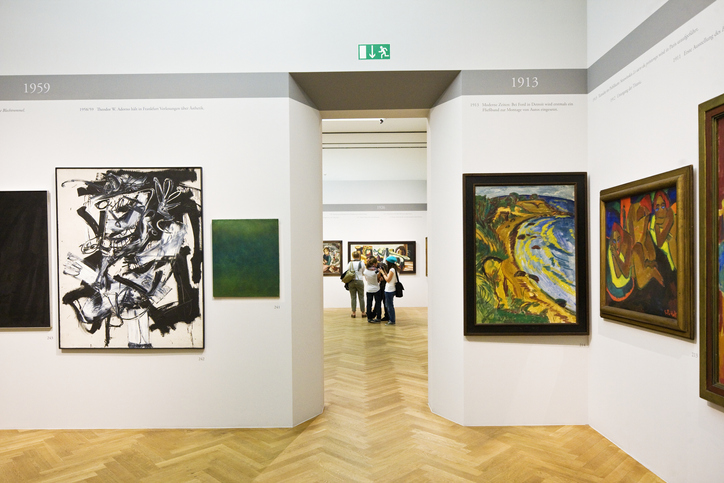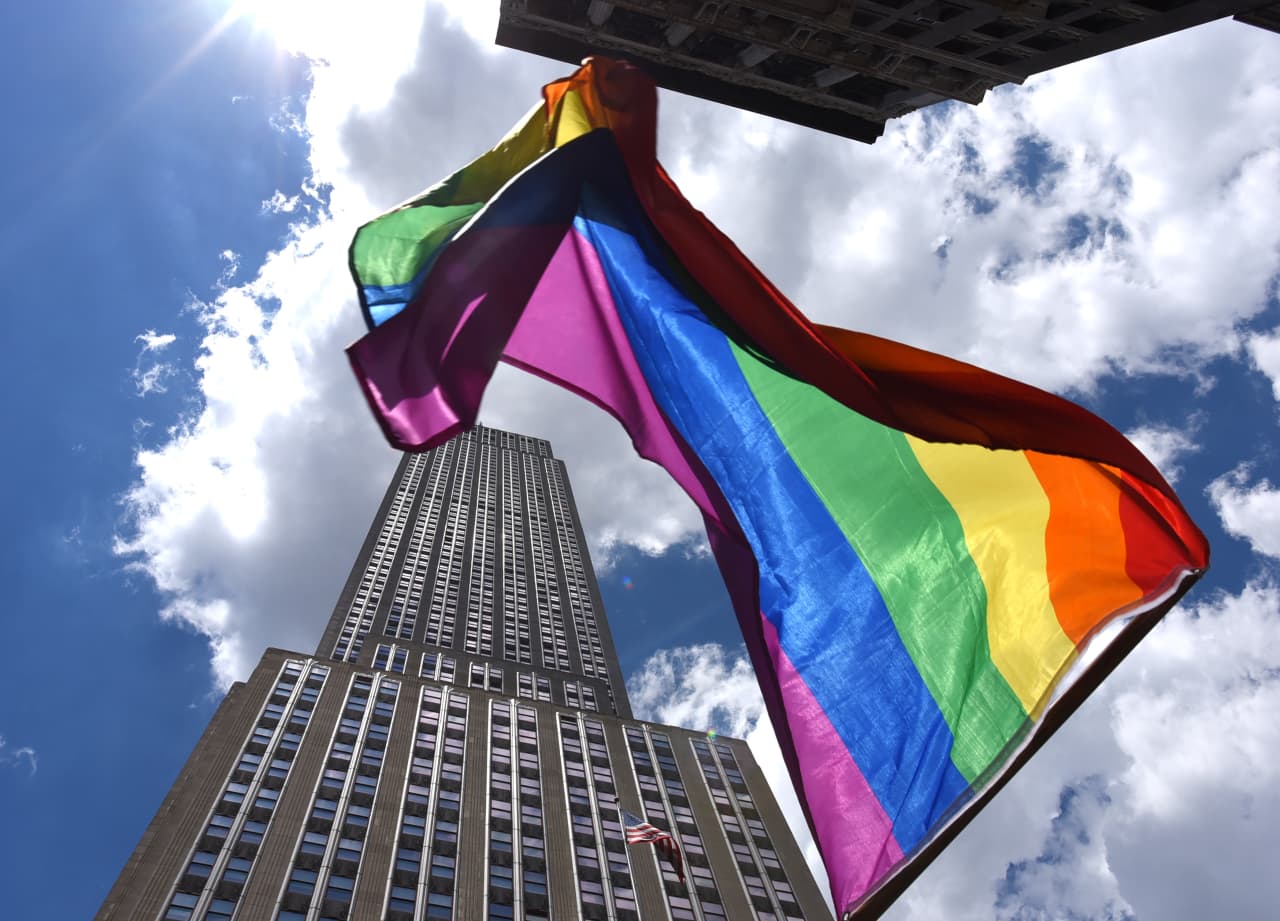Art Is a Rising Focus for Wealth Managers and Family Offices
The value of art and collectibles owned by the world’s wealthiest individuals totaled nearly US$2.2 trillion as of last year, an amount that could grow to nearly US$2.9 trillion by 2026, according to recent analysis from wealth management advisor Deloitte Private and ArtTactic, a research and analysis firm. Yet, the art market overall has grown only 0.6% annually since 2008, failing to keep up with inflation, and with the surge of growth in overall global wealth.
Deloitte Private—a division of U.K.-based Deloitte—and London-based ArtTactic said in the eighth edition of their biennial Art & Finance Report. That means there are many more wealthy people who could own art. The report proposes an intriguing reason for the stunted growth: The fact that more than three-quarters of auction sales are generated by the work of a little more than 1% of all artists.
“We can assume that only a small percent of art buyers are behind these transactions, which leaves us with a heavy concentration around a small number of artists and buyers—plus a small number of art professionals (galleries, auction houses, etc.),” the report said. “Could this be one of the main reasons for the art market’s overall lacklustre growth in the last decade?”
The more than 400-page report, which examines trends and developments at the intersection of art and wealth management, is informed by surveys with private wealth managers and this year, with several family offices, where art and collectibles comprise 13.4% of client assets—five percentage points more than at private banks.
“While art and collectibles provide portfolio diversification and potential value appreciation, they often are a more personal investment with emotional ties to the family’s interests and preferences,” Wolf Tone, the global leader of Deloitte Private, said in the report.
Overall, 89% of wealth managers in addition to collectors and art professionals who were also surveyed, believe “art and collectible wealth should be part of a wealth management offering,” up from 65% that said so in the first Art & Finance survey in 2011. One reason art is touted as an investment option is its value doesn’t move in sync with traditional market instruments; another reason is the perception that the art market’s performance has been relatively strong compared with measures such as the S&P 500—a broad measure of U.S. stocks.
Fine art indexes developed by New York-based Artnet Worldwide Corp. reveal a more nuanced picture. In the five years up to the first half of 2023, the compound annual growth rate for fine art was a negative 0.4% compared with a 10.4% gain for the S&P 500, according to Artnet. Looking at individual investing categories, European Old Masters recorded a 1.6% CAGR in that period, while global post-war art (by those born between 1911 and 1944) posted a CAGR of 1.4%. Over 10 years, the CAGR for fine art overall was only 0.1% compared with a 10.7% gain for the S&P 500, according to Artnet. Artnet analysts noted in the report, however, that art—as a physical asset—is a better hedge against inflation than traditional market instruments, such as stocks, which are valued according to the expected future cash flows of their underlying businesses. Fine art returns rose 4.2% between January 2022 and July 2023 compared with a 6.6% decline in the S&P 500.
“Despite a spike in inflation and higher interest rates, art prices suffered less than other asset classes during this period of economic stress, demonstrating the asset class’ ability to serve partially as an effective hedge, especially regarding the blue-chip, high-end fine art category,” the report said. Though the report confirmed that most people still buy art because they like it—60% of collectors are driven by art’s “emotional value,” consistent with past years—financial factors are rising in importance. For the first time, 41% of collectors surveyed said their primary motivation for buying art was financial, overtaking “social value” as the second-ranked motivation.
One reason is that younger collectors are largely driven by financial considerations: 83% cite potential investment returns as a key reason to buy art, up from 50% in the last survey in 2021. Of those surveyed, 61% also cited portfolio diversification as a driver and 51% said art can be a safe haven in uncertain times, up from 34% in 2021.
“This tells us about how the new generation of collectors may relate to art as an alternative capital asset class, both now and in the future,” the report said. The rise of art investment vehicles, particularly fractional-art platforms that allow individuals to buy a share in a painting as they would a share of stock, are another factor: 50% of younger collectors are interested in fractional ownership, up from 43% in 2021, the report said. The most popular way to buy art remains just that—directly buying a piece, according to 88% of collectors and 83% of art professionals.
Yet fractional ownership is making inroads, particularly as more initiatives offer options that are supervised by regulators in the U.S., Europe, and Asia. Though resistance remains, the report said the emergence of these platforms “could allow art and collectible assets to be more easily integrated into asset management allocation strategies in the future.”
 Copyright 2020, Dow Jones & Company, Inc. All Rights Reserved Worldwide. LEARN MORE
Copyright 2020, Dow Jones & Company, Inc. All Rights Reserved Worldwide. LEARN MORE
This stylish family home combines a classic palette and finishes with a flexible floorplan
Just 55 minutes from Sydney, make this your creative getaway located in the majestic Hawkesbury region.
Continued stagflation and cost of living pressures are causing couples to think twice about starting a family, new data has revealed, with long term impacts expected
Australia is in the midst of a ‘baby recession’ with preliminary estimates showing the number of births in 2023 fell by more than four percent to the lowest level since 2006, according to KPMG. The consultancy firm says this reflects the impact of cost-of-living pressures on the feasibility of younger Australians starting a family.
KPMG estimates that 289,100 babies were born in 2023. This compares to 300,684 babies in 2022 and 309,996 in 2021, according to the Australian Bureau of Statistics (ABS). KPMG urban economist Terry Rawnsley said weak economic growth often leads to a reduced number of births. In 2023, ABS data shows gross domestic product (GDP) fell to 1.5 percent. Despite the population growing by 2.5 percent in 2023, GDP on a per capita basis went into negative territory, down one percent over the 12 months.
“Birth rates provide insight into long-term population growth as well as the current confidence of Australian families,” said Mr Rawnsley. “We haven’t seen such a sharp drop in births in Australia since the period of economic stagflation in the 1970s, which coincided with the initial widespread adoption of the contraceptive pill.”
Mr Rawnsley said many Australian couples delayed starting a family while the pandemic played out in 2020. The number of births fell from 305,832 in 2019 to 294,369 in 2020. Then in 2021, strong employment and vast amounts of stimulus money, along with high household savings due to lockdowns, gave couples better financial means to have a baby. This led to a rebound in births.
However, the re-opening of the global economy in 2022 led to soaring inflation. By the start of 2023, the Australian consumer price index (CPI) had risen to its highest level since 1990 at 7.8 percent per annum. By that stage, the Reserve Bank had already commenced an aggressive rate-hiking strategy to fight inflation and had raised the cash rate every month between May and December 2022.
Five more rate hikes during 2023 put further pressure on couples with mortgages and put the brakes on family formation. “This combination of the pandemic and rapid economic changes explains the spike and subsequent sharp decline in birth rates we have observed over the past four years,” Mr Rawnsley said.
The impact of high costs of living on couples’ decision to have a baby is highlighted in births data for the capital cities. KPMG estimates there were 60,860 births in Sydney in 2023, down 8.6 percent from 2019. There were 56,270 births in Melbourne, down 7.3 percent. In Perth, there were 25,020 births, down 6 percent, while in Brisbane there were 30,250 births, down 4.3 percent. Canberra was the only capital city where there was no fall in the number of births in 2023 compared to 2019.
“CPI growth in Canberra has been slightly subdued compared to that in other major cities, and the economic outlook has remained strong,” Mr Rawnsley said. “This means families have not been hurting as much as those in other capital cities, and in turn, we’ve seen a stabilisation of births in the ACT.”
This stylish family home combines a classic palette and finishes with a flexible floorplan
Just 55 minutes from Sydney, make this your creative getaway located in the majestic Hawkesbury region.






















